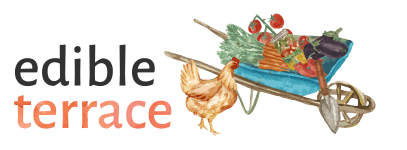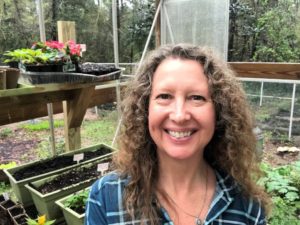Hey! By the way… TheEdibleTerrace is reader-supported. When you buy through links on our site, we may earn an affiliate commission and as an Amazon affiliate, we earn from qualifying purchases. Thanks in advance for your support!
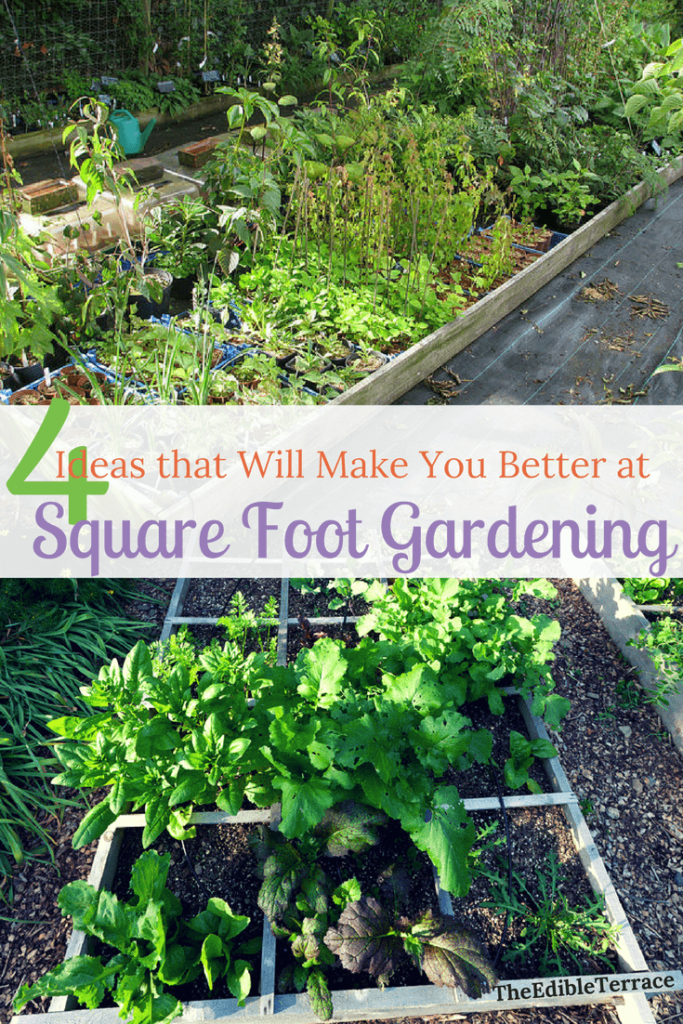
It has been said square foot gardening has many benefits. It’s easy to start. There is little to no weeding and the raised bed aspect of it means you do not have to worry about improving the existing soil before beginning.
Square foot gardening was the brainchild of Mel Bartholomew. It is a method for creating and managing raised gardens. To put it simply, one builds a raised bed, puts down a weed cloth, fills with a specific mix of soil, grids out the bed into square foot sections and plants away!
We hope this square foot gardening guide will help get you started on the road to planting and growing your own food. Shall we get started?
[toc]
How to build a Raised Garden Bed
The raised bed can be either purchased as a kit or built DIY style. The Food Project offers a pdf online for creating your own raised bed-with or without a frame. The manual is very thorough-from choosing the type of framing material to framing instructions to soil vendor lists. Lots of pictures included!
The University of Florida posted plans for an elevated square foot garden (your back is cheering wildly right now!). These plans are also very thorough.
I ordered a Gronomics elevated bed. It was incredibly easy to put together. No hammer or nails required. As you can see, I did not put a grid down. I did not want to waste any space so used bamboo skewers for my borders. Interestingly, my 48 inch length was technically 47.5” from end to end so my vegetables were shorted on one side. Gronomics! We see what you’re doing!
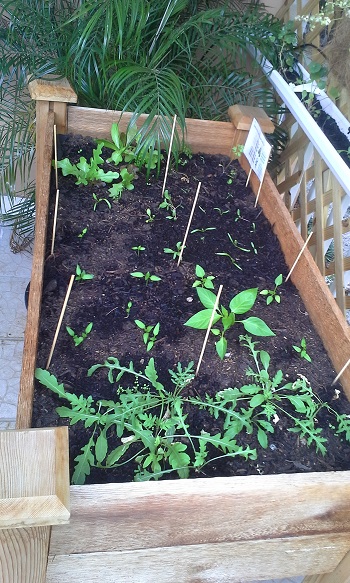
Amy’s version of square foot gardening!
Big hint: Make sure the bed is placed where it can get a lot of sunlight.
Square Foot Gardening Layout
The premise of this gardening method is to break out your garden into 12 inch grids using some kind of physical item to separate them out. I used bamboo skewers. Other ideas are wood, plastic or even string. Any of these can be overlaid across the top. Or, you could insert thin boards to create physical barriers in the soil itself.
Soil for raised gardens
Mel Bartholomew recommends a very specific soil for his gardening method. This is considered the most important part of the entire project. The MOST! Mel’s recommended mix consists of 1/3 compost, 1/3 peat moss and 1/3 vermiculite. Additionally, he recommends getting five different types of compost to ensure your plants get a well-rounded supply of nutrients. You may have to cast your net wider than one store to find 5 types of compost.
Vermiculite is a wee costly-so fair warning. Make sure you choose a coarse grade when you do find it. You can find square foot gardening soil mixes from big box stores such as Home Depot. Take note of Mel’s face on the bag. Can we say residual income?!?
Fill your planter with soil and take note how deep it is. This will play into the types of plants you can grow.
Square Foot Garden Planting Guide
Now for the really fun part! What do you want to grow? When I started gardening, I wrote a list of all the vegetables I eat-from the most to the least. For example, I am a vegetarian. My typical lunch is a large salad. Usually around 5-6 cups. That adds up to a LOT of lettuce! We also eat a ton of potatoes and beans.
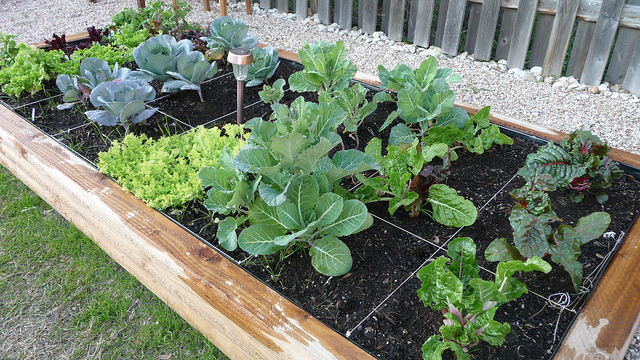
When I first started gardening, I bought some heirloom seeds from Annie’s Heirloom Seeds. Microgreens, Spinach and Organic Lettuce Blend. It was my big experiment as I had never gardened before. This Spring, we put together our 48” by 24” Gronomics raised bed. However, since I only have approximately 6” of soil in it, I needed to keep that in mind when choosing what to grow. I wanted to grow carrots so had to choose a shorter variety. My potatoes definitely would not work.
One website I found that is a lot of fun and incredibly helpful with planning is Gardener’s Supply Company. They have a fun and helpful Garden Planner that I used to decide how to lay out my vegetables. I recommend it. They also give planting instructions.
Once you have your seeds, make holes in your soil to the depth recommended on the seed packet. Also, make sure you are spacing out appropriately. A small confession. When I first planted, I misunderstood what the spinach packet told me to do so spaced my spinach seeds out 12” apart-which means I only planted three seeds in my entire 36” window box. Haha! Silly me.
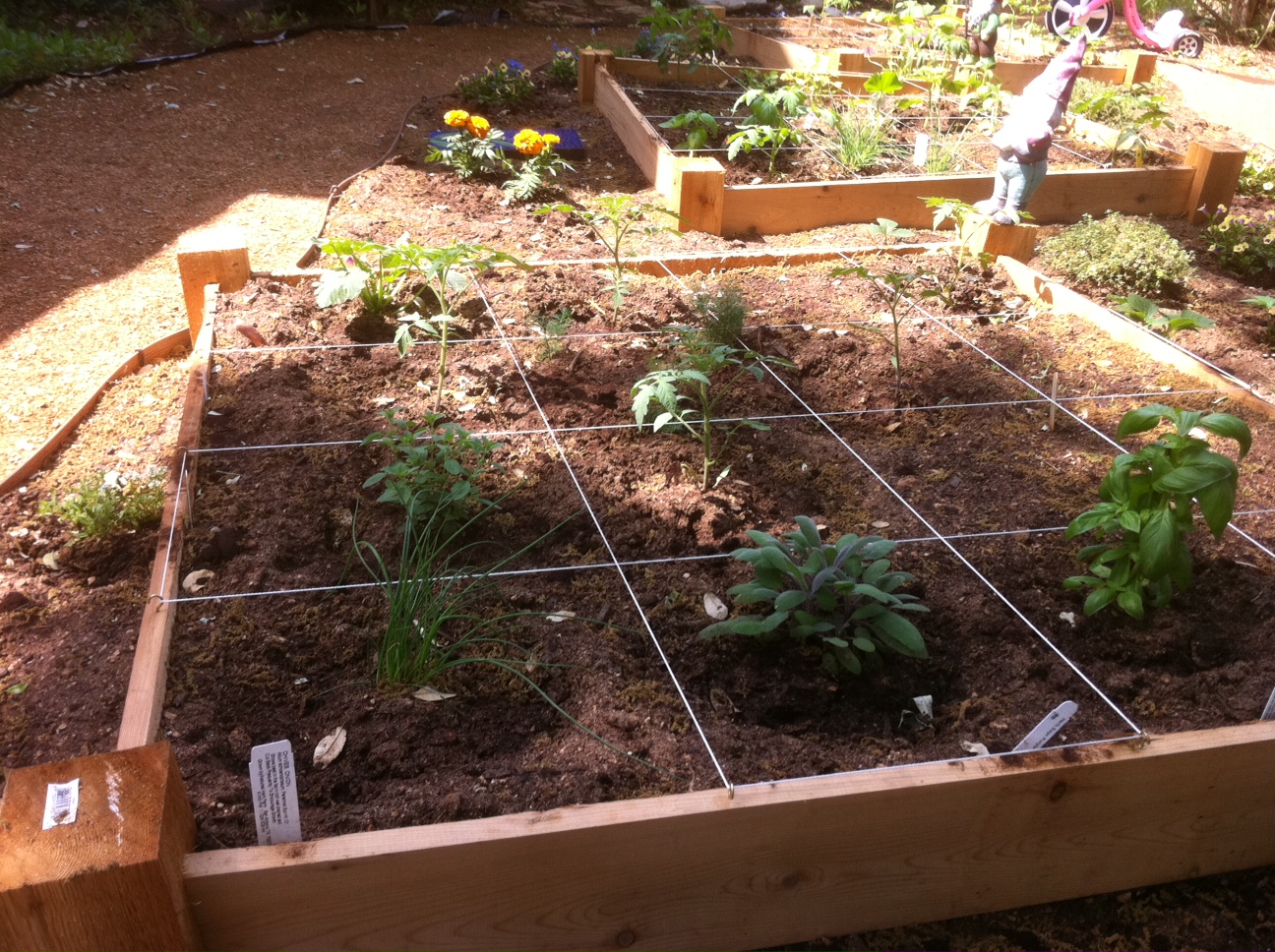
Anyhoo, this is where the square foot gardening layout step previously mentioned becomes important. In theory, each 12 inch grid can hold one species. Each hole only needs 1-2 seeds. Carrot seeds are so small that you can use 4-5 to better ensure germination. Water your newly planted seeds immediately and then watch your garden carefully to ensure it stays well-hydrated. According to The Vegetable Gardener’s Container Bible, there may be days when you water twice due to the heat.
Oh yes. Take note not all plants should be grown together. For example, onions do not play well with many other plants. Conversely, Nasturtium an edible flower, provides valuable nutrients to other plants so is beneficial to plant around them.
Are you excited to begin? I get it! Let’s get started! Would you like to share your gardening success with someone? If you send us a short article and pictures, we will post on our site giving you ALL the credit!
